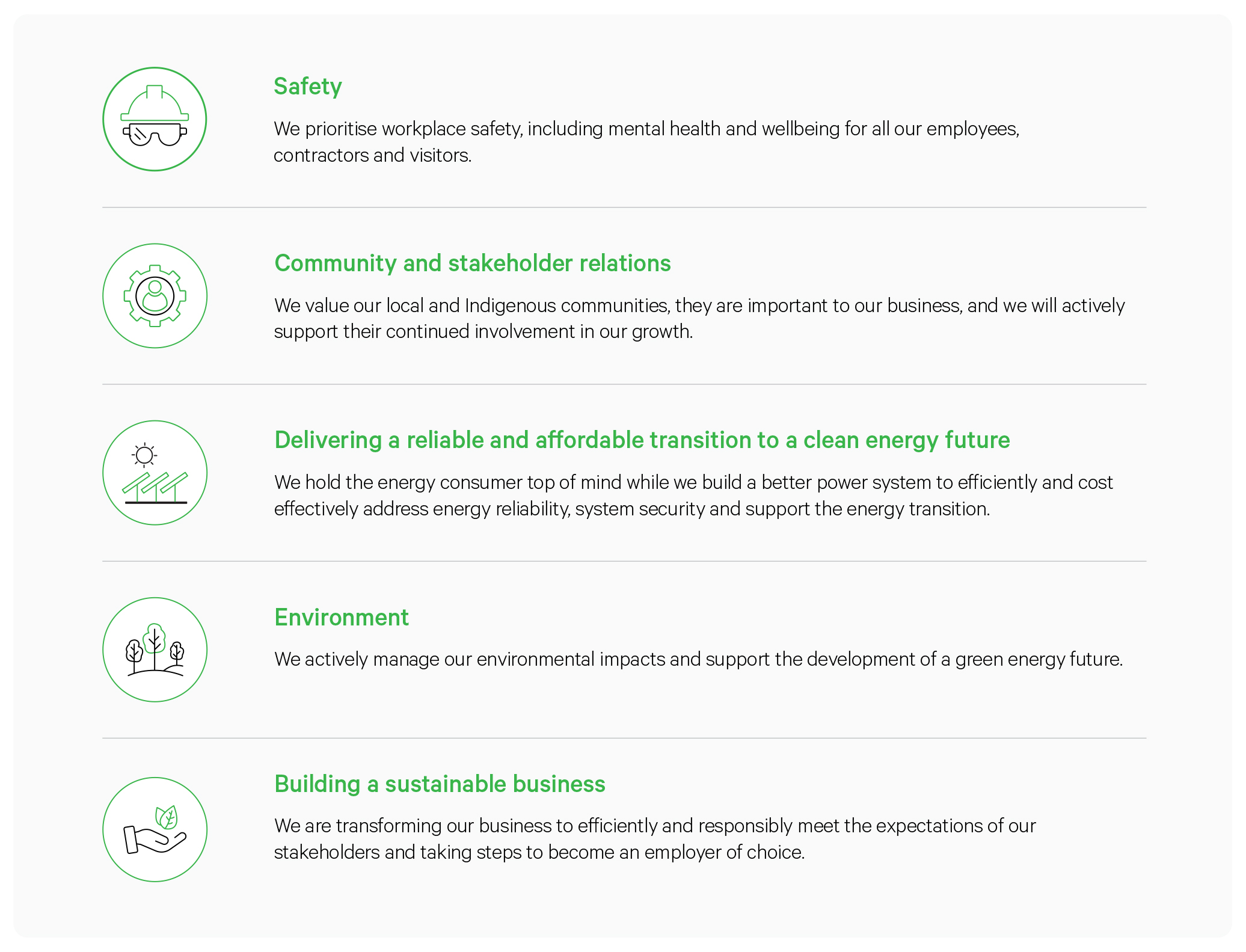We are progressing our social and environmental performance, and expanding our public disclosure, so that our customers, our people and our communities can be confident that we are moving towards a sustainable future.
Our approach
Transgrid’s approach to sustainability brings our Vision and Purpose to life. As the nation's largest transmission company, we fully understand our role in securing a safe and secure transition to clean energy in a way that meets the needs of our stakeholders and consumers.
In recent years, Transgrid has taken significant steps to increase the sophistication and impact of our approach to managing Environmental, Social and Governance (ESG) issues to better support our Vision and Purpose.
After developing a new corporate strategy in 2022, we undertook a materiality assessment to understand the issues that are important to our stakeholders, and to support the development of a resilient and value-driven strategy.
We identified five areas that represent the most significant ESG factors facing the organisation, as well as topics of concern to stakeholders. These five areas are the basis of our new Sustainability Framework. They focus and guide our sustainability efforts, in alignment with our corporate strategy and underpinned by our corporate values, good business practices and an ethical decision-making approach to “do the right thing”.

Highlights of our progress
- Rolled out science-based aligned, credible and ambitious near and long-term greenhouse gas emission (GHG) reduction targets to build on our leadership in the energy transition.
- Continued construction of the Project EnergyConnect, to deliver the first new electricity interconnector between Australian states in 15 years, enabling integration of renewables in south-west NSW.
- Developed a System Security Roadmap to support the transition.
- Developed a new Social Licence Framework to help us balance timely, sustainable and acceptable outcomes for all stakeholders.
- Launched a new safety vision - ThinkSafe, WorkSafe, HomeSafe - to underpin the safety culture shift Transgrid has been undergoing for the last few years.
- Lumea has continued to facilitate the connection of renewable energy generators, including Rye Park which once complete will be the biggest wind farm in NSW.
- Launched a new Community Engagement Policy and Stakeholder Management Procedure to provide strategic and systemic approaches to engaging with stakeholders and communities, allowing for tailored, two-way engagement.
- Launched Legacy 100, Australia’s first multi-million dollar training initiative to boost skills in the power transmission sector.
- Introduced flexible public holidays to give employees the opportunity to swap a selected public holiday for a more meaningful day in the same calendar year based on their culture or beliefs.
- Launched our Stretch Reconciliation Action Plan (RAP) which comprises a three-year action plan focused on building respectful relationships with Aboriginal and Torres Strait Islander communities and business partners.
- Implemented a Landowner Assistance Program to provide confidential, independent support and counselling services to landowners affected by Transgrid’s work.
- Continued our pre-apprenticeship program for women and electrical engineering scholarships for women to help address the under-representation of women in the organisation.
- Launched a new Gender Affirmation Procedure that outlines the support available for employees identifying as non-binary or gender diverse and who wish to affirm their gender at work.
- Offered electrical engineering scholarships for Aboriginal and Torres Strait Islander students through partnerships with University of Technology Sydney (UTS).
Reporting
Sustainability Report
We launched our third annual Sustainability Report in FY24 which outlines our progress and highlights in managing environmental, social and governance issues.
Document
Document
Document
Document